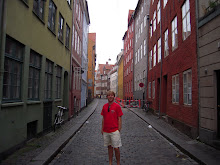Walter Benjamin, in “The Work of Art in the Age of Mechanical Reproduction”, states the following:
“Even the most perfect reproduction of a work of art is lacking in one element: its presence in time and space, its unique existence of the place where it happens to be. The unique existence of the work of art determined the history to which it was subject throughout the time of its existence.”
This statement reminded me of the basic goals of Rea Tajiri’s documentary History and Memory. What Tajiri attempts to do is recreate what her parents’ experiences were like in a Japanese internment camp. However, all Tajiri has to work with is one sole memory, one image image, one detail her mother gave to her about the experience—the cupping of water and subsequent splashing on her face. It is up to Tajiri to flesh out the rest of the background story and create a truth with her narrative.
Though Tajiri is not “reproducing” a work of art—she is creating one—she has the same struggles that Benjamin lists here. Her work, no matter her efforts, cannot reclaim the “presence in time and space” her mother’s memory did. Nor can she herself return to that time, and have that “unique experience” her mother did. Tajiri’s work is as much about her desire to expose truth of what happened at the camps (and, thus, alert the public about the psychologically damaging effects of what took place) as it is a reflection about the painful truth of experience and the futility of fully recreating the past. Tajiri’s work reminds us why cameras exist in the first place: to try to capture those fleeting moments, to have some indication that they happened.
When Benjamin states that the “unique existence of the work of art determined the history to which it was subject”, his claims again match up with Tajiri’s work. Tajiri, in order to create a background to her parents’ pasts, researches the internment camps and provides clips of the films of the time that dealt with the issue. Tajiri shows the viewer how her parents and their existence were represented by the media of the time. Tajiri herself does this work for the viewer; she puts together all the layers that have been added to her parents’ story since then.
History and Memory features Tajiri taking a memory and creating a piece of art around it. Tajiri, in her work, then adds the history behind the art and shows how the story has evolved and changed, and, in her case, been misrepresented. Tajiri’s work also is a meditation on the act of filming and creating art and how these sort of creations affect memory and place individuals in history.
Subscribe to:
Post Comments (Atom)

You make a very interesting connection between Benjamin's focus on reproduction of art and Tajiri's exploration of her parents' past. By comparing the two, you seem to suggest that the reproduction of art and the reproduction of life are very similar, if not the same, which in turn seems to be a commentary on the humanity of art. I really like your comment about the function of cameras, how we use them "to capture those fleeting moments." It's as if a piece of art functions as a legacy reminding observers that its artist once lived and created.
ReplyDeleteYou said: "Tajiri’s work reminds us why cameras exist in the first place: to try to capture those fleeting moments, to have some indication that they happened."
ReplyDeleteI agree with your statement regarding the purpose of cameras. This leads me to think about how will our attitudes towards cameras and seeing things on screen will change. Considering how everything can be recorded due to the pervasive use of cameras (cell phones, digital cameras, web cams, Youtube etc), will anything surprise us anymore 20, 30, 50 years down the road. When we entered this digital age that we are in now, there was excitement because finally everyone could be a cameraman and capture their own moments. But have we set ourselves up for a desensitized culture where things captured by camera no longer woos us like it did once before.
Your post cleverly utilizes Benjamin's words in a way that he perhaps did not originally intend, but manages to stay true to the original meaning of his essay on reproduction. By suggesting that a human emotion or experience can be considered a work of art in itself, you make the point that film cannot recreate the true "fleeting moments" of life, let alone other works of art, without losing their original essence, or "aura," as Benjamin would say. The other way you interpret his words is through your understanding of the word "history." While Benjamin uses this not so much literally, but to refer to the original spatial location of what was to be recreated, you use it to refer to the actual history that Tajiri seeks to recreate.
ReplyDeleteYou're alternate interpretation of Benjamin's article is very deep and well supported by Tajiri's film. Rather than speak about the reproduction of art and what that means for its existence, you speak about the reproduction of life and what that infers about art. In a sense, you support the argument that all art is political in the personal sense because it has to do with the politics and relationships of man. The innovative interpretation of Benjamin's essay shines new light on the nature of art and its purpose in relation with reality.
ReplyDelete